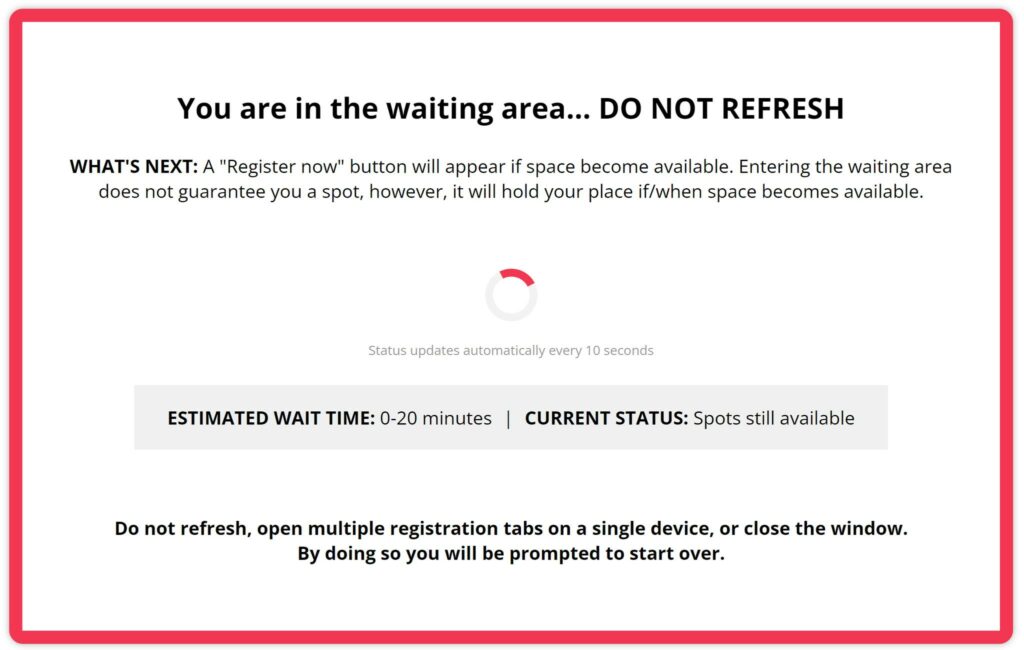Part of Bob’s continued ramblings.
Grandma’s Marathon opened yesterday to a melt down.




Race Roster is also doing so many of the things that old vendors did that motivated me to start RunSignup. Let me vent some…
Scaling
Grandmas registration crashing reminds me of an old registration vendor that everyone used to use and was not being able to scale back in the early 2010’s and crashing sites. Races had to go to lotteries and thresholds to get around the registration company’s limitation.
Those crashes back in 2012 motivated Stephen Sigwart and me to work with my friend Rich Friedman to solve the problem. Our goal was to create a platform that could handle registration for 50,000 people in 10 minutes. We achieved this back in 2012. We regularly run our system to handle 2,000 transactions per minute (typically over 3,000 registrations since about 1.5 people register within a transaction) and can scale much larger than that for big days. For example, we scaled further at Thanksgiving last year when we had over 40,000 page views per minute. We publish an annual Infrastructure Report about this. And here are the details on a 12,500 person sell out race, Spring Lake. And the 50,000 registrations we had a couple of days ago.
Doing what we do is hard. Really hard. And takes really smart people like Stephen and Rich. We have tons of load balancing, queueing and cacheing built into each of our layers to make our system truly scalable, much like what large vendors like Google and Meta do.
One of the cheap ways around building a truly scalable system is to put a Queueing system (like Queue-It) in front of the web servers. The idea is that the queue system only let’s so many people thru to the real website at a time so the system does not become overwhelmed. This is what the NYRR system does when they open registration on their home built system. They are a running organization that puts on events, and clearly not a tech company.
But it really, really surprises me to see a queuing system put on the front end of Race Roster’s system, especially for something as modest at 10,000 people registering. The front end queuing system is that big red box above that says there is a wait time. It basically takes off load from the load balancers and web, application and database servers that is the system that does the real work. Maybe it is because they are more of a shoe company than a tech company now?
10,000 in 3.5 Hours
Just to put scaling in context to yesterday. The posts above indicate 10,000 registrations happened in the first 3.5 hours. That is laughably bad.
If they had opened on RunSignup, that would have taken 5 minutes at our normal infrastructure. And probably less since we find about 1.5 registrations happen per transaction.

Pricing
When I started RunSignup, one of the things that bugged me was that the big registration company at the time charged a per participant charge. We went with per transaction charge because I thought it was family friendly. And having 5 people joining within one transaction did not change our costs any from having one person joining. The credit card charge and software development costs are the MAJOR costs of our business, and neither change based on the number of participants in a transaction.
Race Roster obviously charges per participant and makes a lot more per registration as noted by participants to Grandma’s last night.

Their pricing should enable them to afford to build decent infrastructure to handle this type of load. I know they are smaller than us, but with their pricing, they should be able to do better than 10,000 registrations in 3.5 hours.
Openness
I came from an open source technology background when I started RunSignup. It was amazing to me that the big registration provider, and pretty much all of them still are so closed about what they are doing and why. We have nearly 2,000 blogs and thousands of help articles and videos.
Race Roster did a very large price increase about a year ago. Yet they did not talk about it. And customers are discovering it by surprise.

And they have a certain way of not really explaining real pricing and real revenue share.
Data Ownership
The key reason Asics bought Race Roster is to get the contact information of runners so they could target ads to participants and sell more shoes.
Again, one of the things that motivated the creation of RunSignup was this idea that a race registration company could market to me as a runner. And as a race director, that they would take participant information from my race and SELL that to other races.
One Asics
When signing up for Grandmas, you signup for One Asics. This reminds me of a certain “Advantage” program that lost lawsuits and is still under investigation by the Consumer Protection Agency.
The other subtle thing that this does is try to cut out the local running shoe store. Maybe because I used to co-own a running shoe store, I am sensitive to this. But one of the reasons to join One Asics is to get free shipping for shoes ordered online. I don’t know if Grandmas works with any running shoe stores, but they unintentionally hurt their business. Fortunately Asics is less popular than Brooks, Hoka, On, Nike, etc., so hopefully it does not hurt the local running stores too much.
Summary
Thanks for letting me vent. I am so glad we are an employee owned company putting technology and customers first that is here for the long run.
Part of Bob’s continued ramblings.
